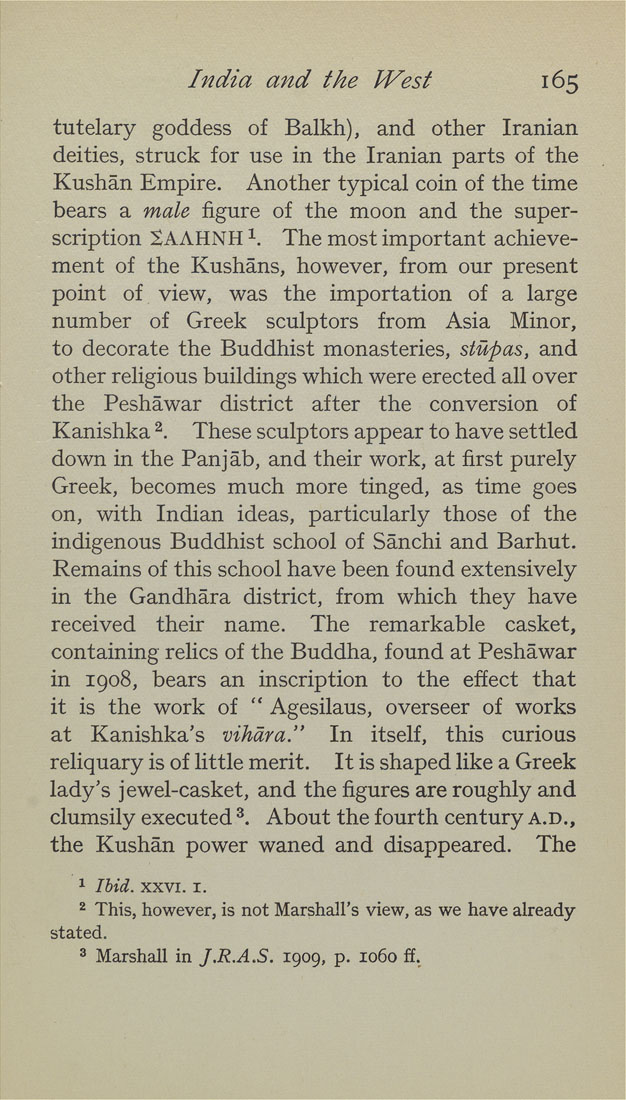India and the West 165
tutelary goddess of Balkh), and other Iranian
deities, struck for use in the Iranian parts of the
Kushan Empire. Another typical coin of the time
bears a male figure of the moon and the super¬
scription SAAHNH 1. The most important achieve¬
ment of the Kushans, however, from our present
point of view, was the importation of a large
number of Greek sculptors from Asia Minor,
to decorate the Buddhist monasteries, stupas, and
other religious buildings which were erected all over
the Peshawar district after the conversion of
Kanishka ^. These sculptors appear to have settled
down in the Panjab, and their work, at first purely
Greek, becomes much more tinged, as time goes
on, with Indian ideas, particularly those of the
indigenous Buddhist school of Sanchi and Barhut.
Remains of this school have been found extensively
in the Gandhara district, from which they have
received their name. The remarkable casket,
containing relics of the Buddha, found at Peshawar
in 1908, bears an inscription to the effect that
it is the work of " Agesilaus, overseer of works
at Kanishka's vihdra." In itself, this curious
reliquary is of little merit. It is shaped like a Greek
lady's jewel-casket, and the figures are roughly and
clumsily executed ^. About the fourth century a.d.,
the Kushan power waned and disappeared. The
1 Ibid. xxvi. I.
2 This, however, is not Marshall's view, as we have already
stated.
3 Marshall in J.R.A.S. 1909, p. 1060 ff.
|








